by Samantha Kennedy | Oct 16, 2018

Downed trees and other debris should be handled carefully. Use proper equipment and follow all safety precautions to avoid injury. (Photo source: Samantha Kennedy)
Hurricane Michael was a storm of historic proportions, slamming into the Florida Panhandle and wreaking havoc on millions of people across the Big Bend region. Now that the storm has passed, the recovery phase has begun. Damage assessment, debris removal, structural repairs, and food safety concerns are just a few aspects of storm recovery, as people seek to rebuild their lives and return to a sense of normalcy.
There are a lot of things to think about after a disaster and it can be overwhelming. The first priority should always be basic necessities: food, water, and shelter. Make sure any structure is safe enough for habitation. If the structure’s integrity is compromised, seek alternate living arrangements.
Heed all boil water notices, if applicable. If boiling water is not possible, stick to using clean, bottled water for drinking, food preparation, and personal hygiene. Do not assume that because the food in the refrigerator is cool to the touch, that it is safe to eat. Perishable food must be kept at or below 40 degrees Fahrenheit to be considered safe. If it is uncertain as to whether that temperature was maintained while the power was out, the food should be discarded. Discard any perishable food from refrigerators after a power outage longer than 4 hours.
Be careful when assessing damage after the storm. Wear sturdy shoes and avoid wading through floodwaters. Wear a hat, sunglasses, and sunscreen when out in the sun. Drink plenty of clean water and maintain energy levels with small, nutrient-dense meals and snacks. Damaged tree limbs may continue to fall after the storm, so take heed of potential falling debris. Standing water can harbor snakes, fire ants, and other potentially dangerous critters, so take proper precautions at or around puddles or floodwater.
Use tools such as chainsaws and generators correctly and practice proper safety precautions. Do not run a generator inside and store gas cans a safe distance from both the generator and the living space. Allow others more skilled with using a chainsaw to help with debris collection and removal. If dealing with large amounts of mold, be sure to wear protective clothing and the proper respiratory mask to avoid contact with spores.
Unfortunately, many dishonest people take advantage of situations such as natural disasters to prey on those in need. Beware of people offering to help with repairs quickly and/or for an extraordinarily low price. Only hire reputable licensed contractors, even if that means having to wait for services. The Florida Department of Business and Professional Regulation myfloridalicense.com maintains a list of licensed contractors in the state of Florida. The Better Business Bureau provides ratings for a variety of businesses, including contractors. Use these resources as a guide to finding the right contractor.
Contact insurance companies as soon as possible after the storm to get the claims process rolling. Have the policy on hand when the call is made to make the process easier. It would be helpful to document any damage and have those photos available to share with the insurance agent or claims adjuster. Post-disaster is an extremely busy time for insurance companies, so be as cooperative and patient as possible during the process.
Disaster recovery is a very stressful time for everyone, often leading to confusion, anger, and helplessness. Reach out to existing support systems such as family, friends, churches, or other groups for emotional support. Practice self-care, such as regular meals and breaks. Establish a new normal routine and stick to it, especially for children. Most importantly, be kind to yourself and others during this difficult time.
The University of Florida IFAS Extension Service is a local resource for post-disaster education and assistance. More information about each of these topics and more can be provided by your local extension office.
The UF/IFAS Disaster Preparation & Recovery blog is a comprehensive resource to help with disaster recovery: http://disaster.ifas.ufl.edu/.
Extension classes are open to everyone regardless of race, creed, color, religion, age, disability, sex, sexual orientation, marital status, national origin, political opinions or affiliations.
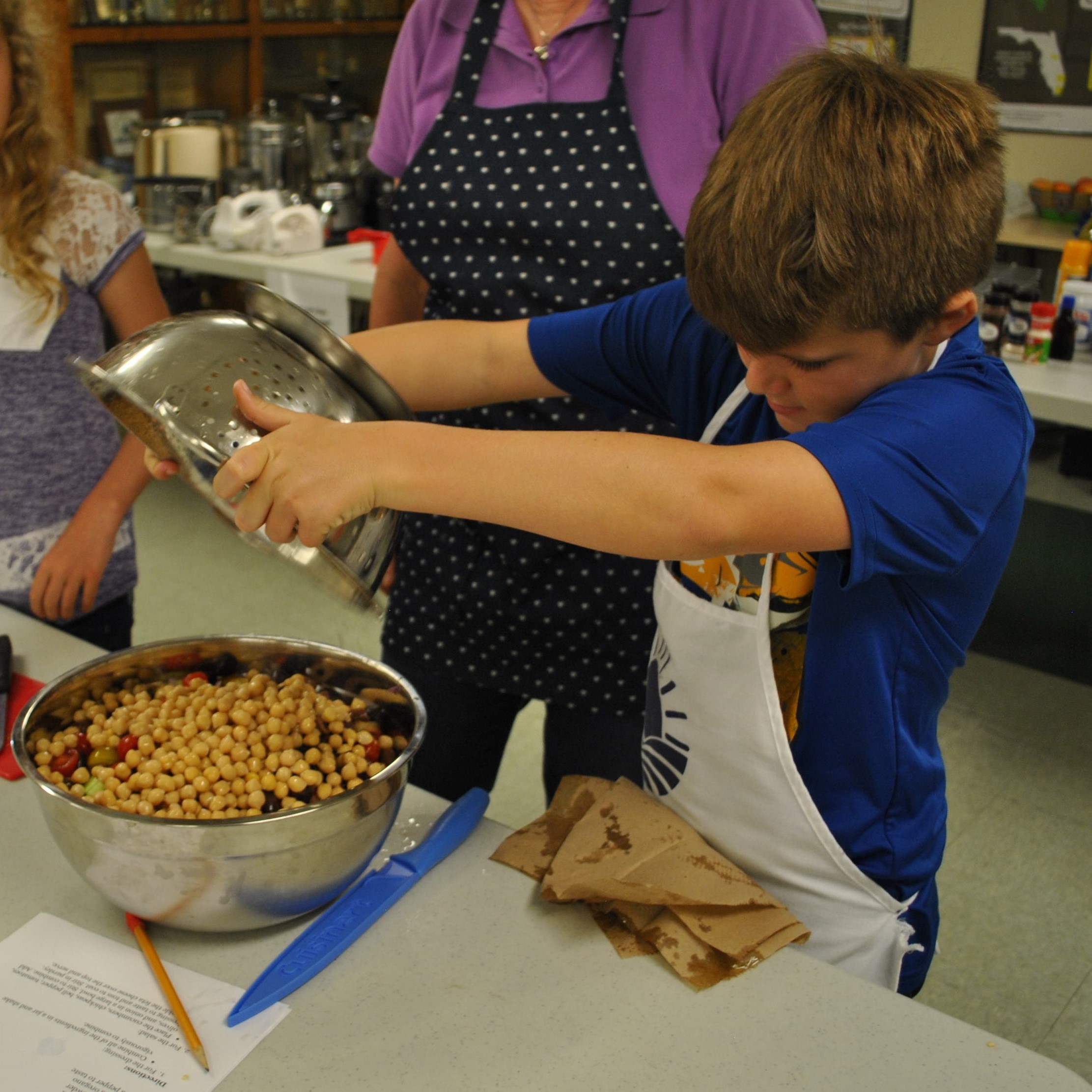
by Samantha Kennedy | Oct 3, 2018
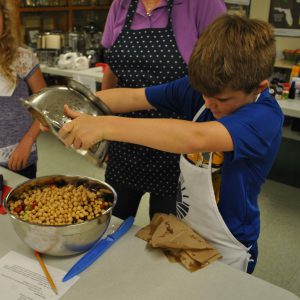
Allowing kids to help with meal prep can encourage healthy eating. (Photo source: Samantha Kennedy)
Kids and vegetables have an historically love-hate relationship. It is not clear why this came to be, but it is clear that many kids claim to dislike vegetables even when they have not even tried them.
There are many reasons children may not have tasted vegetables. Perhaps they are not provided in the home, either due to a lack of availability, lack of knowledge about preparing them, or because parents do not make the effort to expose their kids to new foods. Or maybe kids are influenced by their peers and by the media they consume, which tell them vegetables are gross.
Whatever the reason, it is important to combat this trend and encourage kids to eat more vegetables. Fresh fruits and vegetables are a vital component of healthy eating. Healthy eating, in turn, helps reduce the risk of obesity, heart disease, diabetes, and other nutrition-related aliments.
Not sure how to start getting kids to eat vegetables? Try a few simple tricks. Cutting vegetables up into bite-sized pieces and storing them in small containers or plastic bags in the refrigerator will help make them more be appealing and accessible to smaller children.
Model healthy eating behavior. Kids are more likely to eat vegetables if they see their parents eating them. If mom and dad are enjoying trying something new, children will feel more confident in trying it as well.
Set a rule that before a child can say they do not like something, they must try it first. However, do not make it punitive. Children need to approach a new vegetable on their own instead of being forced to try it. If they absolutely refuse to try it, that is fine. Offer it to them again another time and keep trying.
Negative reinforcement such as making a child stay at the table until they eat their vegetables can negatively affect a child’s eating habits. On the flip side, rewarding kids with dessert or other treats if they eat their vegetables can also have a negative effect.
Treating vegetables as a trial a child must endure to get to something better is a surefire way to increase a child’s dislike for vegetables in the future. Vegetables should be offered in a relaxed, encouraging environment. It can take 8 to 10 tries before a child is ready to taste something new. Offering vegetables in different forms – mashed potatoes vs. baked, steamed broccoli vs. raw, etc. – is also a good way to help a child try new foods.
Serving too much of something at once can be overwhelming to a child. It is important to provide small, manageable portions of foods to kids, especially when introducing something new. Do not make it mandatory to eat all of something, either. Allow the child to eat what they want and stop when they are finished.
Offering a variety of vegetables at mealtime will provide kids with a choice and increase the chance that they will eat at least one vegetable per meal. However, avoid serving the same vegetables all the time in order to encourage them to try something new.
A final way to encourage kids to eat more vegetables is to let them get involved in the selection, purchase, and preparation. Allow them to pick a vegetable at the store. Provide them with the tools and ingredients to make their own salads. If possible, let them plant a seasonal vegetable in a container and watch it grow. The more involved kids are with their food, the more positive their eating habits will be.
For more information about getting kids to eat more fruits and vegetables, please contact Samantha Kennedy, Family and Consumer Sciences Agent, at (850) 926-3931.
by Samantha Kennedy | Jul 25, 2018
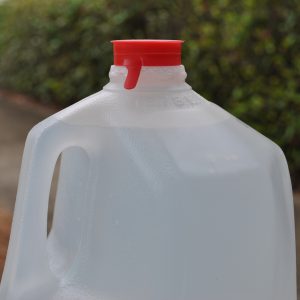
Commercially bottled water is a great choice for your emergency water supply. Store the bottles in a cool, dry place and have enough water on hand for each person (including pets) to have 1 gallon of water per day for 7 days. (Photo source: Samantha Kennedy)
Hurricane season is in full swing and will last through November 30. If you have not prepared your emergency supply kit, now is the time, BEFORE a hurricane is imminent.
The most important item in your emergency supply kit is clean drinking water. Clean water is essential for drinking, cooking, and basic personal hygiene during and after an emergency event.
You may stock up on clean water in one of two ways: by purchasing commercially bottled water from the supermarket, or by bottling it yourself.
If you purchase commercially bottled water, take heed of the use by date. While water does not spoil, per se, the quality of the water can diminish over time. The bottles may also start to break down as well, causing leakage or contamination. It is recommended to replace your emergency drinking water supply each year to maintain optimal safety and freshness.
Bottling your own water takes a little more effort, but can be just as safe as and will cost less than buying it commercially. Choose the proper containers. Glass may be sturdy, but it is heavy and can break, so use it sparingly. Plastic two-liter soda bottles and gallon-sized water jugs are ideal for storing water. Only use food-grade plastic containers and not containers previously used for chemicals such as bleach.
Sanitize the containers with a solution of 1 teaspoon of bleach per quart of water. Rinse the containers with clean water after sanitizing. Once the containers are filled with clean water, seal them with tight-fitting caps, label them as drinking water along with the bottling date, and store bottles in a cool, dry place.
Be sure to follow all boil water notices, especially if your water comes from a municipal source. If you get your water from a private well and are uncertain whether it is contaminated, it is better to err on the side of caution and boil water vigorously for 3 to 4 minutes before using it.
Boiling water is the most effective way to kill harmful bacteria that may be present. However, another effective means of purifying water is by adding bleach to the water. The type of bleach is important. Only use 5.25% household bleach free of perfumes, dyes, and color-safe or other additives. Eight (8) drops of bleach per gallon for clear water or 16 drops per gallon for cloudy water are the recommended amounts for effective purification.
How much water should you store in your emergency supply kit? At a minimum, one (1) gallon per person (including pets) per day for at least seven days is the recommended amount. This should be enough for drinking, food preparation, and basic personal hygiene. You may want to store more water as a precaution, if necessary.
For more information about preparing an emergency water supply, please refer to the UF/IFAS publication Preparing and Storing an Emergency Safe Drinking Water Supply.
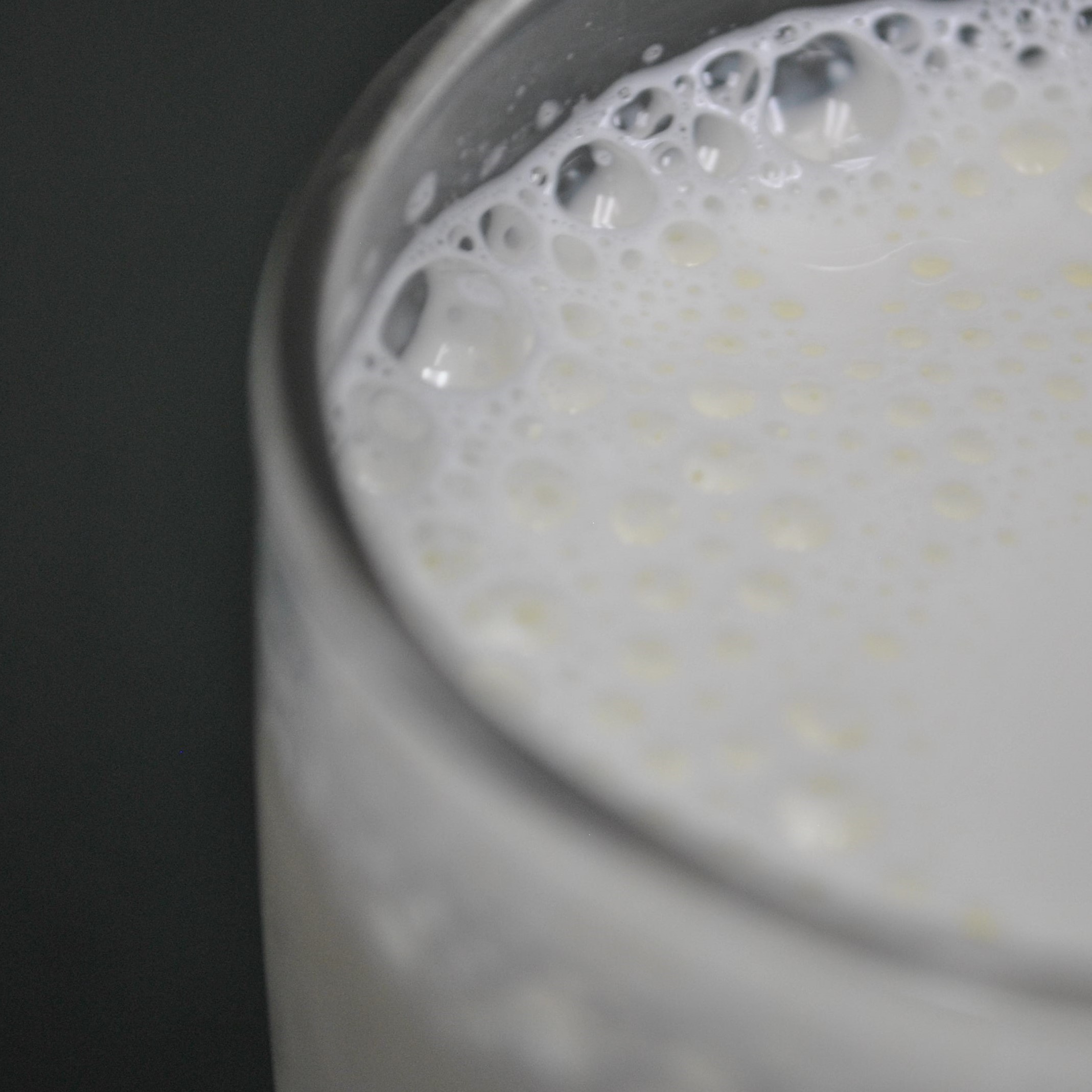
by Samantha Kennedy | May 18, 2018
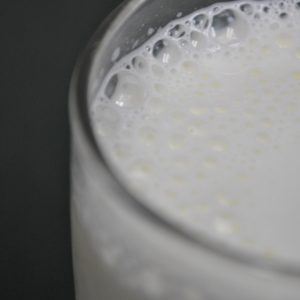
Cow’s milk is an excellent source of calcium, vitamin D, phosphorus, and potassium. (Photo credit: Samantha Kennedy)
There are no bones about it: osteoporosis is no joke. Over time, this condition can lead to brittle bones that break easily and cause debilitating pain. Taking steps early to support bone health can go a long way toward decreasing the risk of developing osteoporosis later.
One excellent way to promote bone strength is through the consumption of calcium and vitamin D. These two nutrients work together to build and strengthen bone tissue. The best way to boost calcium intake is by having a diet filled with calcium-rich foods.
Dairy foods such as milk, cheese, and yogurt are excellent sources of calcium. These foods – but most especially cow’s milk – are also rich in other minerals, such as phosphorus and potassium, as well as two of the B vitamins, B12 and riboflavin.
Phosphorus is important for cell maintenance and repair throughout the body and is especially important for healthy bones and teeth. Potassium is an important electrolyte that helps regulate both water balance and acid-base balance in the blood and tissues.
As for vitamin D, the body produces it naturally through exposure to the sun. Just 10 minutes of sun exposure a day is enough to help the body produce the vitamin D needed to aid in calcium absorption. Foods fortified with vitamin D, such as milk, orange juice, and soy or almond milk, also can provide adequate vitamin D to the body.
One thing to watch out for when choosing dairy foods is the fat content. While these foods are rich in beneficial nutrients, they also can be high in fat. However, there are a wide array of dairy choices that are lower in total fat.
Milk, yogurt, sour cream, and cheese are all available in low-fat or fat free varieties. In fact, fat free (i.e., skim) milk actually contains more calcium per 8 oz. than whole milk! Those unable to consume dairy products due to an allergy or lactose intolerance can still get calcium, vitamin D, and other minerals from products such as soy, almond, coconut, or rice milk which are fortified. (See the infographic, “What’s in your glass?” from the National Dairy Council.)
Dairy foods are part of a healthy and balanced diet. They are rich in a variety of important vitamins and minerals that play a vital role in overall health. For more information about the benefits of dairy or for recipe ideas, please call your local Extension office.
Here is one quick and tasty idea for a cool summer treat: Fruity Yogurt Popsicles!
by Samantha Kennedy | Apr 10, 2018
Many of today’s commercial cleaners are petroleum-based, which may have harmful effects on human and environmental health. But have no fear! On the market today are many wonderful “green” cleaning products that are planet- (and you-) friendly and can be found alongside their more conventional cousins in the cleaning aisle. These products are non-toxic, biodegradable, non-petroleum-based, and are just as effective at getting rid of grime.
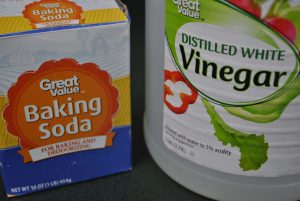
Two common household products used in homemade cleaners are vinegar and baking soda. Photo credit: Samantha Kennedy
They do, however, tend to be more expensive. If spending extra money isn’t your thing, you can still clean green” by taking advantage of a few everyday products you probably have in your pantry right now.
White vinegar and baking soda are two of the most effective cleaning products out there and cost just a fraction of what commercial cleaning products cost. Add a little warm water to either of these products and you have created a solution that can clean just about everything, from tile floors to coffee-stained mugs to sinks and showers.
Another great natural and inexpensive cleaning agent is borax. Found in the laundry aisle, it is great as an all-purpose cleaner when mixed with water and can be used on floors, countertops, sinks, and toilets. It is nonabrasive, has no toxic fumes, and is safe for the environment. Borax also doubles as a safe insecticide, by slowly poisoning ants, cockroaches, silverfish, and termites to death.
Other common household products that make great cleaners are salt, lemon juice, and rubbing alcohol. Hot water mixed with salt makes an excellent drain deodorizer. Lemon juice makes a terrific mild bleaching agent and air freshener. Rubbing alcohol makes a great sanitizer for countertops. It is also good for cleaning minor wounds and will kill those annoying ghost ants (and others) that often try to make a home in your kitchen.
Making your own household cleaners is safer, healthier, and less expensive. For some quick and easy cleaner recipes, please read “Homemade Household Cleaners.”
For more information about this and other Family and Consumer Sciences topics, please contact Samantha Kennedy at 850.926.3931 or skennedy@ufl.edu.







